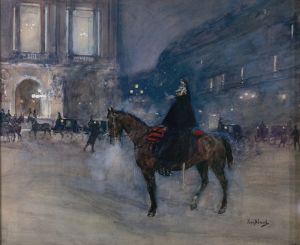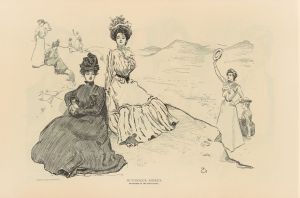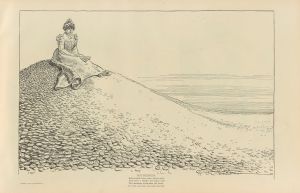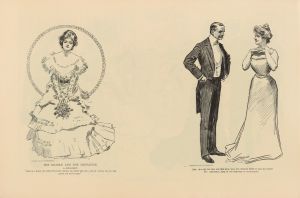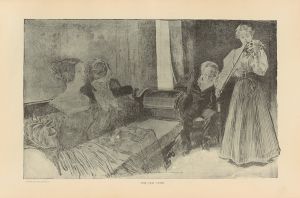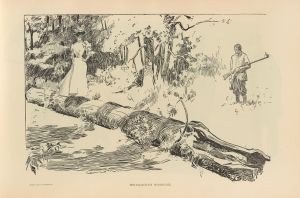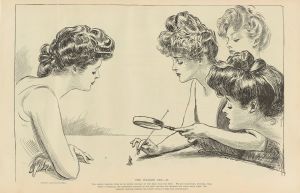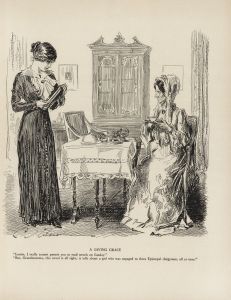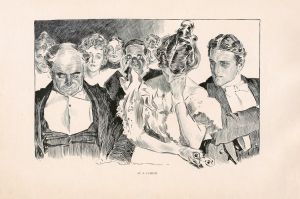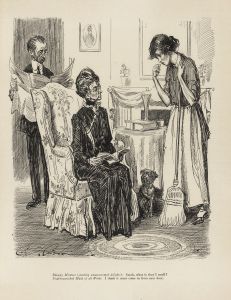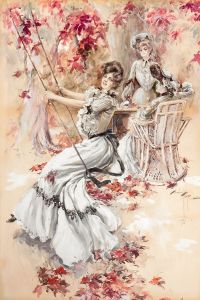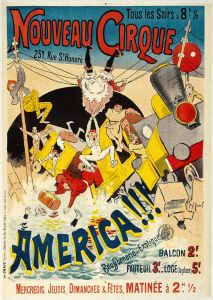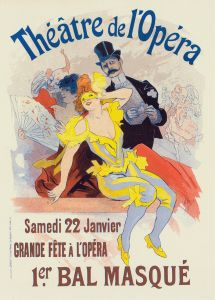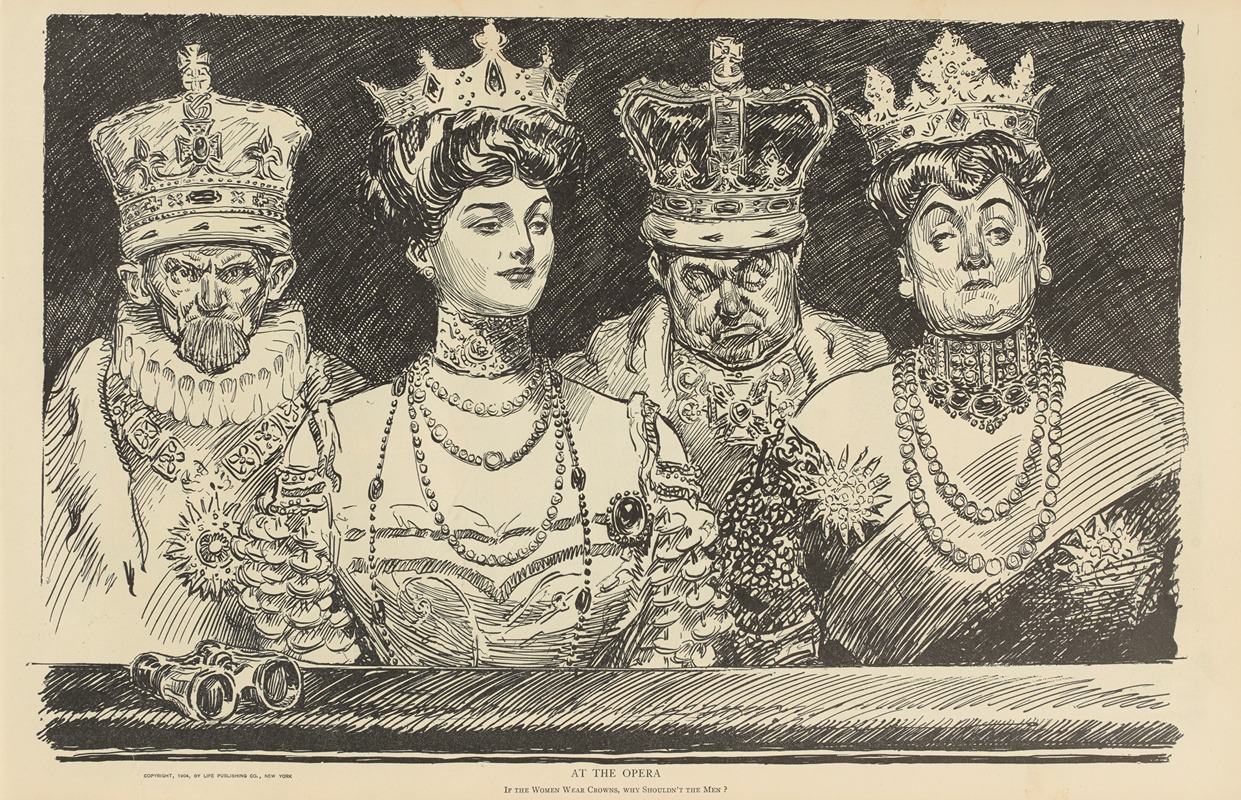
At the opera
A hand-painted replica of Charles Dana Gibson’s masterpiece At the opera, meticulously crafted by professional artists to capture the true essence of the original. Each piece is created with museum-quality canvas and rare mineral pigments, carefully painted by experienced artists with delicate brushstrokes and rich, layered colors to perfectly recreate the texture of the original artwork. Unlike machine-printed reproductions, this hand-painted version brings the painting to life, infused with the artist’s emotions and skill in every stroke. Whether for personal collection or home decoration, it instantly elevates the artistic atmosphere of any space.
Charles Dana Gibson was an influential American illustrator, best known for his creation of the "Gibson Girl," a representation of the idealized American woman at the turn of the 20th century. One of his notable works is "At the Opera," which exemplifies his skill in capturing the social dynamics and fashion of his time.
"At the Opera" is a pen-and-ink drawing that showcases Gibson's characteristic style, marked by its detailed line work and keen observation of social settings. The illustration depicts a scene in an opera house, a popular venue for social gatherings among the upper class during the late 19th and early 20th centuries. This setting allowed Gibson to explore themes of social status, fashion, and the interactions between men and women, which were central to his body of work.
In the drawing, Gibson portrays elegantly dressed men and women, highlighting the opulence and sophistication associated with attending the opera. The women in the illustration are likely modeled after the "Gibson Girl," characterized by their fashionable attire, confident demeanor, and a sense of independence. The "Gibson Girl" became an iconic symbol of the era, representing a new standard of femininity that was both alluring and assertive.
Gibson's work often reflected the societal norms and expectations of his time, and "At the Opera" is no exception. The opera house setting serves as a microcosm of the social hierarchy, where one's attire and behavior were indicative of their social standing. Through his detailed depiction of clothing and posture, Gibson provides insight into the cultural values and social rituals of the period.
The illustration also captures the dynamics between the genders, a recurring theme in Gibson's work. The interactions between the male and female figures in "At the Opera" suggest a complex social dance, where flirtation and courtship are subtly conveyed through body language and facial expressions. This nuanced portrayal of gender relations was a hallmark of Gibson's illustrations, which often explored the evolving roles of men and women in society.
"At the Opera" is a testament to Charles Dana Gibson's ability to encapsulate the essence of an era through his art. His illustrations not only entertained but also offered commentary on the social mores of his time. The drawing remains a valuable piece of cultural history, providing contemporary audiences with a glimpse into the world of the late 19th and early 20th centuries.
Gibson's influence extended beyond his illustrations, as the "Gibson Girl" became a cultural phenomenon, inspiring fashion, literature, and even theater. His work continues to be studied and appreciated for its artistic merit and its reflection of the societal changes occurring during his lifetime. "At the Opera" is a prime example of how Gibson's art captured the spirit of an age, making it a significant piece in the history of American illustration.





